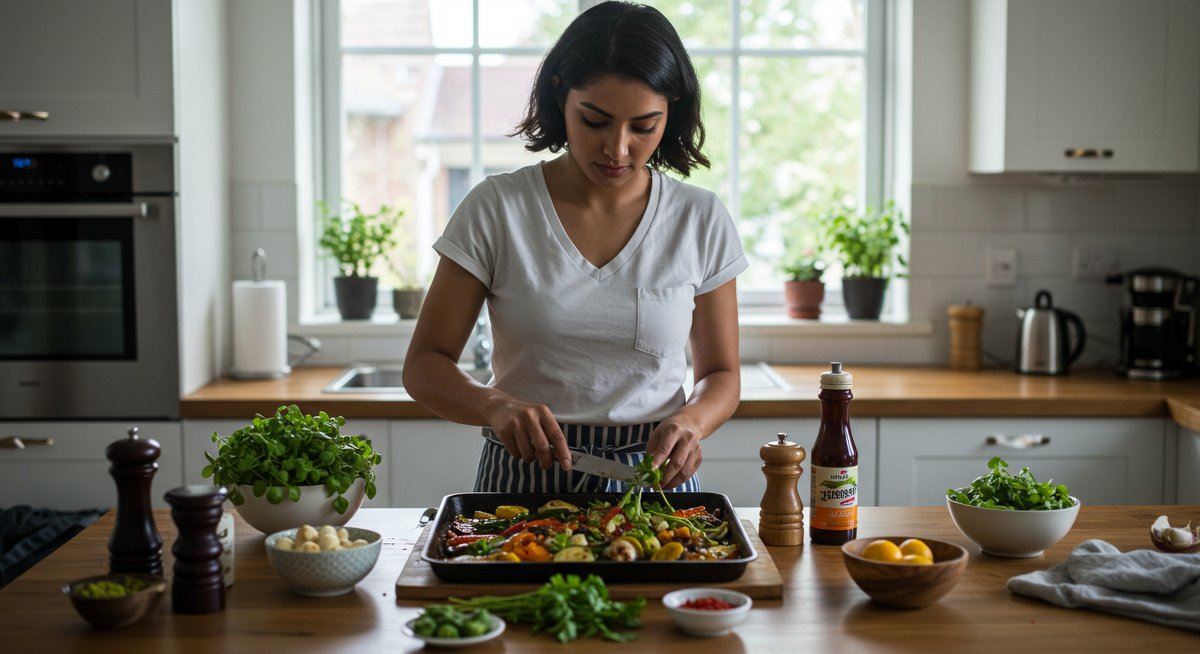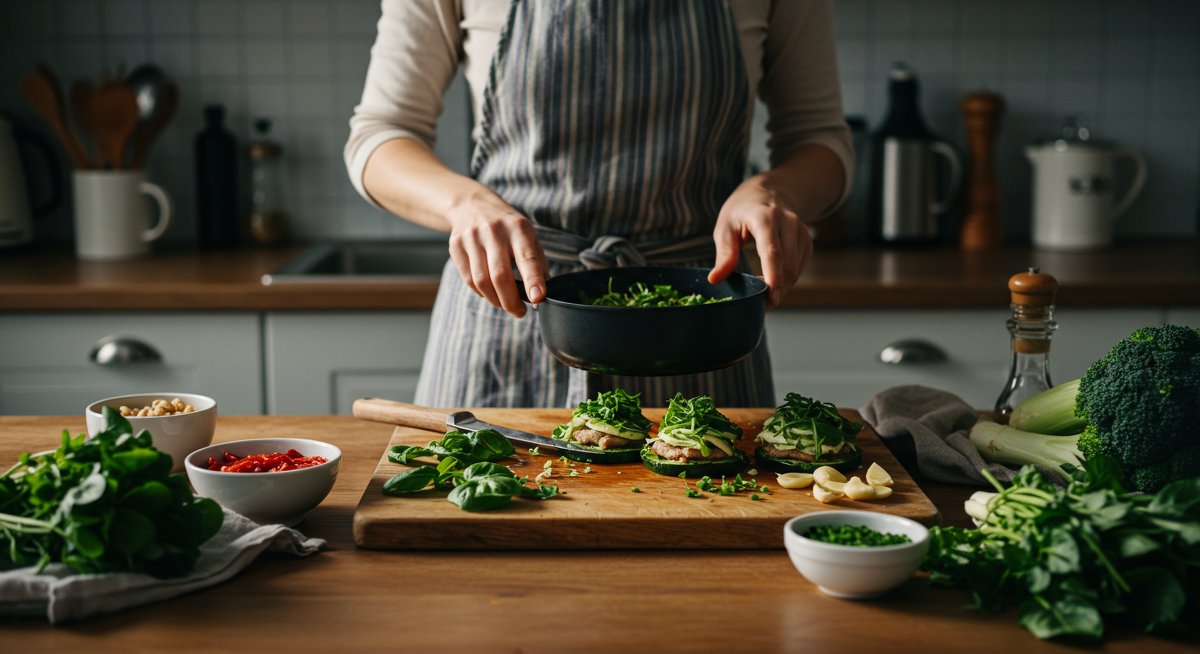Looking for a way to boost your health and make your meals more exciting? Side dishes are the perfect solution! They add variety, flavor, and essential nutrients to every meal. This guide features 7 easy and delicious side dish recipes, designed specifically for beginner cooks. Whether you're looking to add more vegetables to your diet or just want some quick and easy meal additions, these recipes are your starting point for a healthier, happier you. Get ready to transform your dinner routine with these simple, yet satisfying, side dish ideas!

Why This Recipe is Perfect for Beginners
Starting your cooking journey can feel overwhelming, but these recipes are designed to be approachable and stress-free. Each recipe uses simple techniques and readily available ingredients. There's no need for complicated equipment or advanced culinary skills. The focus is on creating healthy and delicious food without the fuss. These recipes are also easily adaptable, allowing you to experiment with different flavors and ingredients as your confidence grows.
For example, consider a simple roasted broccoli recipe. You can easily adjust the seasonings to your liking - a little garlic powder, some red pepper flakes for a kick, or even a squeeze of lemon at the end. The goal is to build a foundation of healthy cooking habits and enjoy the process. These beginner-friendly recipes are perfect to learn the basics and make delicious food.
Another example, is a simple green salad. You will be surprised how easy it is to prepare one, you can chop the vegetables at the beginning of the week and store them in the fridge. Then you will only need to prepare a quick dressing with lemon juice, olive oil, salt and pepper. So you have a tasty and healthy side dish in a matter of minutes.
Essential Ingredients You'll Need
One of the best things about side dishes is that they often use simple, fresh ingredients. Here's a general list of what you'll need for the recipes in this guide:
- Fresh Vegetables: Broccoli, carrots, bell peppers, zucchini, spinach, lettuce, and tomatoes. Buy them fresh and store them in your fridge.
- Olive Oil: A heart-healthy cooking staple. Consider buying good quality extra virgin olive oil.
- Spices and Herbs: Salt, pepper, garlic powder, onion powder, dried oregano, and fresh herbs like parsley or basil will instantly make your meals tastier.
- Lemon: Adds brightness and flavor to any dish. Great for dressings and marinades.
- Vinegar: Balsamic, apple cider, or red wine vinegar for dressings and marinades.
Remember that the quality of your ingredients directly impacts the taste of your dishes. Buying fresh and high-quality ingredients will make a world of difference, even in simple recipes.
Step-by-Step Instructions
Here are simplified instructions for each recipe:
1. Roasted Broccoli with Garlic
- Prep: Preheat oven to 400°F (200°C). Wash and chop 1 head of broccoli into florets.
- Toss: In a bowl, toss the broccoli with 1-2 tablespoons of olive oil, 1 teaspoon of garlic powder, salt, and pepper.
- Roast: Spread the broccoli on a baking sheet and roast for 15-20 minutes, or until tender and slightly crispy.
2. Simple Green Salad
- Wash: Wash and dry your favorite salad greens (lettuce, spinach, etc.).
- Chop: Chop any additional vegetables like tomatoes, cucumbers, or carrots.
- Dress: In a small bowl, whisk together olive oil, lemon juice, salt, and pepper. Toss with the salad just before serving.
3. Sautéed Spinach with Garlic
- Sauté: Heat a tablespoon of olive oil in a pan over medium heat.
- Add: Add 2 cloves of minced garlic and cook for 30 seconds until fragrant.
- Wilt: Add a bag of fresh spinach and cook, stirring, until wilted (about 2-3 minutes).
4. Oven-Baked Sweet Potato Fries
- Prep: Preheat oven to 400°F (200°C). Peel and cut 2 sweet potatoes into fries.
- Toss: Toss fries with olive oil, salt, pepper, and any other desired spices.
- Bake: Bake on a baking sheet for 20-25 minutes, flipping halfway through, until golden and crispy.
5. Tomato and Cucumber Salad
- Chop: Chop tomatoes and cucumbers into bite-sized pieces.
- Combine: Combine in a bowl.
- Dress: Whisk together olive oil, red wine vinegar, salt, and pepper. Pour over vegetables just before serving.
6. Roasted Carrots with Herbs
- Prep: Preheat oven to 400°F (200°C). Peel and chop carrots.
- Toss: Toss carrots with olive oil, salt, pepper, and dried herbs (such as oregano).
- Roast: Roast for 20-25 minutes, until tender.
7. Quick Quinoa Salad
- Cook: Cook quinoa according to package directions.
- Cool: Let quinoa cool slightly.
- Combine: Mix with chopped vegetables (cucumber, bell peppers), a simple vinaigrette, and fresh herbs.
Tips for Success
- Don't Overcrowd the Pan: When roasting vegetables, ensure they are spread out in a single layer on the baking sheet. Overcrowding will cause them to steam instead of roast, resulting in soggy vegetables.
- Use a Digital Food Scale: Precise measurements are key to consistent results. Investing in a digital food scale can help you measure ingredients accurately, especially when baking. For instance, knowing the exact amount of olive oil is crucial for healthy eating. For more guidance, consider checking out digital food scale.
- Taste and Adjust: Always taste your food and adjust seasonings as needed. The best cooks learn through tasting and fine-tuning their recipes.
- Prep Ahead: Chop vegetables ahead of time to make meal prep easier. Store them in airtight containers in the refrigerator.
- Experiment: Don't be afraid to try different herbs, spices, or vegetables. Cooking is about exploring and finding what you enjoy.
Nutritional Highlights and Benefits
These side dishes are packed with essential nutrients. Broccoli and spinach are rich in vitamins, minerals, and fiber. Sweet potatoes offer complex carbohydrates and beta-carotene. Quinoa provides protein and is a complete grain.
- Fiber: Many of these recipes are high in fiber, which aids digestion and helps you feel full. For instance, a serving of roasted broccoli provides approximately 2.4 grams of fiber.
- Vitamins and Minerals: Vegetables like carrots, spinach, and bell peppers are excellent sources of vitamins A and C, which boost the immune system and protect your cells. A single serving of roasted carrots provides approximately 428% of your daily value of Vitamin A.
- Heart-Healthy Fats: Using olive oil provides heart-healthy monounsaturated fats.
- Antioxidants: Many vegetables contain antioxidants that protect your body from damage caused by free radicals.

Serving Suggestions and Variations
Get creative with your side dishes! Here are a few ideas:
- Add Protein: Serve the roasted broccoli with grilled chicken or fish for a complete meal. Add some cooked chickpeas to the green salad.
- Spice it Up: Add a pinch of red pepper flakes to the roasted carrots or a dash of hot sauce to your quinoa salad.
- Change the Herbs: Try different herbs with each recipe. Rosemary pairs well with roasted sweet potatoes, while basil complements tomato salads.
- Mix and Match: Combine different vegetables in your roasted dishes. Add bell peppers and onions to the carrots, for instance.
Quick Meal Prep Tips
Meal prepping side dishes can save you a ton of time and effort during the week. Here's how:
- Prep on Sunday: Dedicate a few hours on Sunday to chop vegetables, cook quinoa, and prepare dressings.
- Portion Control: Divide your side dishes into individual containers for easy grab-and-go meals. Meal Prep Containers are perfect for this purpose.
- Store Properly: Store cooked vegetables and salads in airtight containers in the refrigerator for up to 4 days.
- Combine with Main Courses: Pair your prepped side dishes with pre-cooked proteins like grilled chicken or baked tofu for quick and balanced meals.
- Freeze for Later: Some side dishes, such as roasted vegetables, can be frozen for longer storage. Be sure to cool them completely before freezing.
Next Steps in Your Healthy Cooking Journey
Congratulations on taking the first step toward healthier eating! Here are a few things you can do to continue your journey:
- Explore More Recipes: Search online for more healthy side dish recipes or experiment with different cuisines and ingredients.
- Plan Your Meals: Use a meal planning app to plan your weekly meals and create a grocery list.
- Track Your Progress: Use a food tracking app to monitor your nutrient intake and ensure you're getting a balanced diet.
- Keep Learning: Read cookbooks, watch cooking videos, and take cooking classes to improve your skills and knowledge.
- Join a Cooking Community: Connect with other foodies and seek support and motivation from online or in-person cooking communities.
By incorporating these healthy side dishes into your diet, you're not just eating better – you're building a foundation for a long and healthy life. Enjoy the process, experiment with flavors, and have fun in the kitchen!